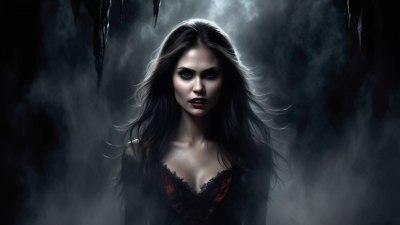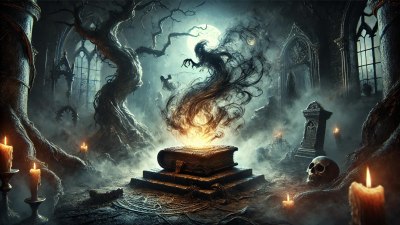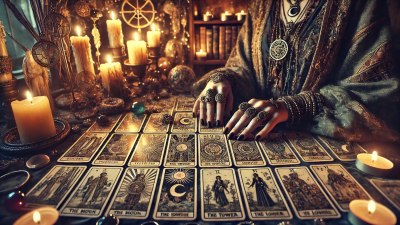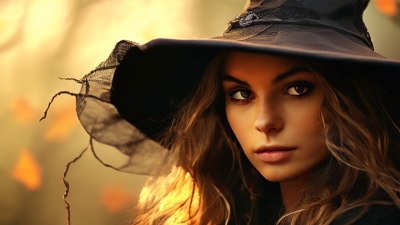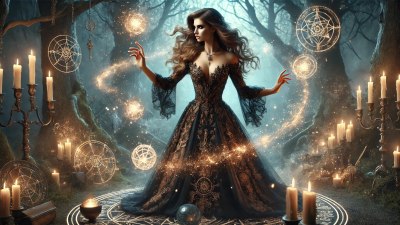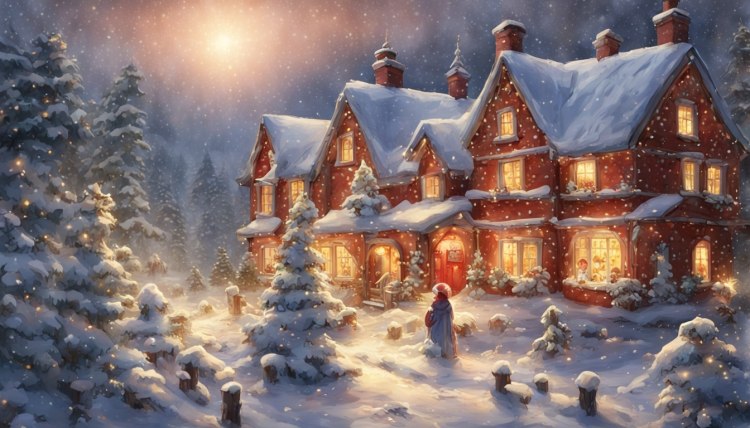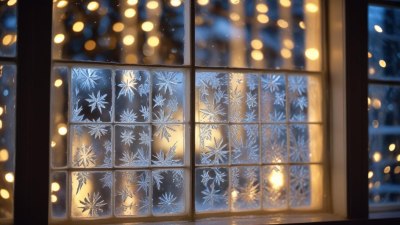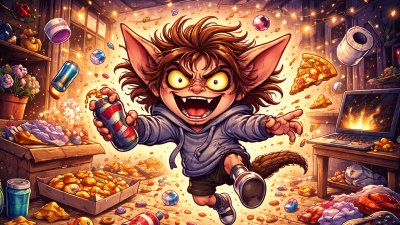Witchcraft in Popular Culture: Fiction vs. Reality 🧙♀️🎥
Discover the truth behind the magic! Explore how witchcraft is portrayed in popular culture versus the reality of modern witchcraft, debunking common myths about spells, supernatural powers, and more!
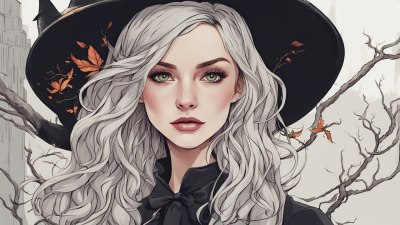
This image was created with the assistance of Playground AI
From movies and TV shows to books and folklore, witchcraft has captured the imagination of audiences for centuries. Depictions of witches in popular culture often paint them as powerful sorcerers, casting spells with a flick of the wrist or brewing potions in bubbling cauldrons. But how much of what we see on screen or read in books reflects the real practices of witchcraft?
The reality of modern witchcraft is often much more grounded and spiritual than Hollywood’s portrayals. Let’s explore the key differences between fictional witches and real-world practitioners, separating myths from reality and uncovering the truth about what witchcraft really is.
Fiction: Witches Can Cast Instant Spells 🔮⚡
One of the most common tropes in popular culture is the idea that witches can cast instant spells with immediate, dramatic effects. In films like Harry Potter, witches and wizards cast spells with a single word, and in shows like Sabrina the Teenage Witch, a wave of the hand can conjure magic instantly.
- Reality: In actual magical practices, spells are not instantaneous. Real-world witches often spend significant time preparing and casting their spells. Magic in modern witchcraft is about setting intentions and working with energy over time to manifest a desired outcome. Spells require focus, ritual, and sometimes weeks or months of work to take effect. While there are certainly rituals designed to help shift energy, the process is much more about inner work, connecting with nature, and aligning oneself with spiritual forces rather than creating immediate, movie-like magic.
Fiction: Witches Have Supernatural Powers 🧙♂️🌀
Popular media often portrays witches as having supernatural powers, from controlling the weather to flying on broomsticks or communicating with the dead. Characters like the Wicked Witch of the West from The Wizard of Oz or Maleficent from Sleeping Beauty showcase witches as beings with otherworldly abilities that can defy the laws of nature.
- Reality: Real witches don’t possess superhuman powers. Instead, modern witchcraft focuses on working with natural elements and forces, such as herbs, crystals, and the phases of the moon. Rather than controlling the weather or flying, witches channel energy, practice mindfulness, and align their intentions with the cycles of nature to bring about change in their lives. They believe in using tools such as tarot cards, candles, and meditation to enhance spiritual growth, self-awareness, and healing—none of which involve defying the laws of physics!
Fiction: Witches Are Evil and Dangerous 🖤💀
Historically, witches have often been portrayed as villains in popular culture, from the evil enchantresses in fairy tales to modern horror films where witches practice dark, malevolent magic. This depiction stems from centuries-old superstitions, often reinforced by stories like the Salem Witch Trials and medieval witch hunts.
- Reality: Modern witchcraft, particularly in traditions like Wicca, emphasizes the importance of harming none and practicing positive, ethical magic. Most witches follow a code similar to the Wiccan Rede, which states, “An it harm none, do what ye will.” Real witches aim to work with the forces of nature for healing, protection, and spiritual growth. Far from being evil or dangerous, many witches are dedicated to living in harmony with the Earth, respecting others, and creating positive change in the world through rituals, herbal remedies, and meditative practices.
Fiction: Witches Brew Potions and Cast Hexes 🧪🕯️
In many movies and TV shows, witches are often depicted concocting potions in cauldrons, surrounded by strange ingredients like eye of newt and wing of bat. They’re also frequently shown casting hexes or curses on their enemies, using magic to bring harm to others. This idea comes from centuries of folklore and legend, where witches were often accused of brewing poisons or casting harmful spells.
- Reality: In modern witchcraft, most practitioners use herbal remedies and create potions for healing and self-care rather than for causing harm. For example, many witches create tea blends or herbal infusions for relaxation, protection, or health, and they often work with natural ingredients like lavender, sage, and chamomile. While there are traditions that acknowledge the power of baneful magic, most witches prefer to focus on positive spellwork that promotes well-being, such as spells for abundance, love, or personal protection. Cursing and hexing are generally discouraged in ethical witchcraft practices, with the understanding that negative energy sent out into the world can return to the caster.
Fiction: Witches Are Solitary Outcasts 🕸️🌲
Many portrayals of witches in popular culture depict them as solitary outcasts, living alone in the woods or hiding from society. This image comes from ancient fears of witches as dangerous, isolated figures who practiced magic in secret.
- Reality: While some witches do prefer to practice alone as solitary practitioners, many are part of vibrant, supportive communities. Covens, or groups of witches who practice together, are common in Wicca and other pagan traditions. These covens often gather for rituals, ceremonies, and celebrations, especially during the eight festivals of the Wheel of the Year (such as Samhain and Beltane). Witchcraft is often a deeply personal path, but it doesn’t necessarily mean living in isolation. In fact, many modern witches connect through online forums, social media, and local groups to share knowledge, support each other, and celebrate their spirituality.
Fiction: Witchcraft Is All About Spells and Magic 🔮🕯️
When people think of witchcraft, their first thought is often about spells, rituals, and magic. While these are certainly aspects of witchcraft, popular culture sometimes focuses so much on the mystical elements that it overlooks the spiritual and practical sides of the practice.
- Reality: Witchcraft, for many modern practitioners, is as much about spirituality, self-discovery, and connection to nature as it is about magic. Witches often follow earth-based spiritual paths, honoring the cycles of the seasons, the phases of the moon, and the natural world. Many witches practice mindfulness, meditation, and energy work, seeking balance, personal growth, and healing in their lives. Rather than just casting spells, witchcraft is about living in harmony with the Earth, being attuned to energy, and working with natural forces to improve one’s life and the lives of others.
Reality: Modern Witchcraft Is Diverse and Evolving 🌍🌿
While popular culture often presents a narrow, exaggerated view of witchcraft, the reality is that modern witchcraft is incredibly diverse, with many different traditions, beliefs, and practices. From Wicca and Druidism to Hoodoo and Heathenry, there are numerous paths within the modern pagan and witchcraft communities. Some focus on ancestor worship, others on nature and the elements, while others may incorporate aspects of ritual magic or herbalism. Each path is unique, and many witches blend traditions to create a practice that resonates with them personally.
Witchcraft Beyond the Screen 🔮✨
While popular culture provides fun and fantastical depictions of witches, the reality of modern witchcraft is far more grounded and diverse. It’s about connecting with nature, personal empowerment, and spiritual growth, rather than supernatural powers or instant magic. By separating the myths from the realities, we can better appreciate the rich history and evolving practices of witchcraft in the modern world.
Whether you're drawn to the mystical aspects or the spiritual path, witchcraft continues to inspire and empower people across the globe—one spell, one ritual, and one intention at a time.








